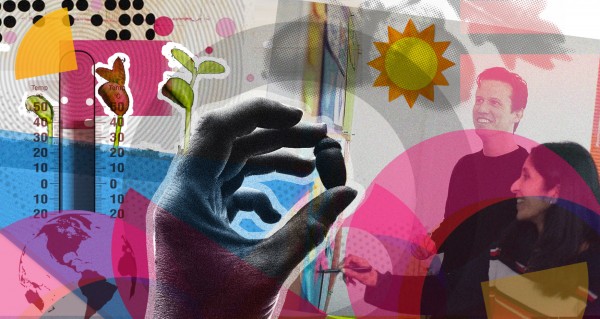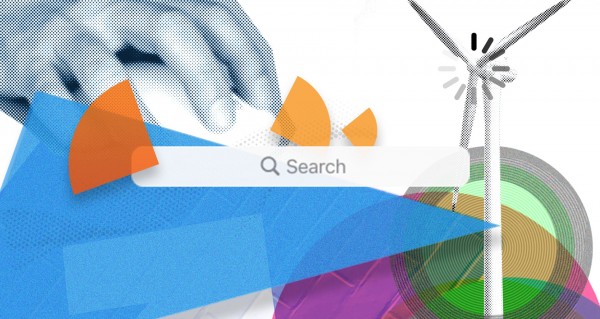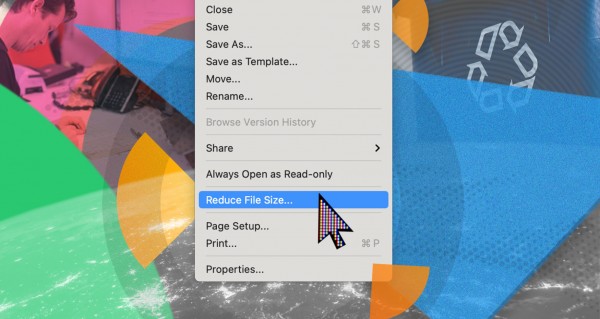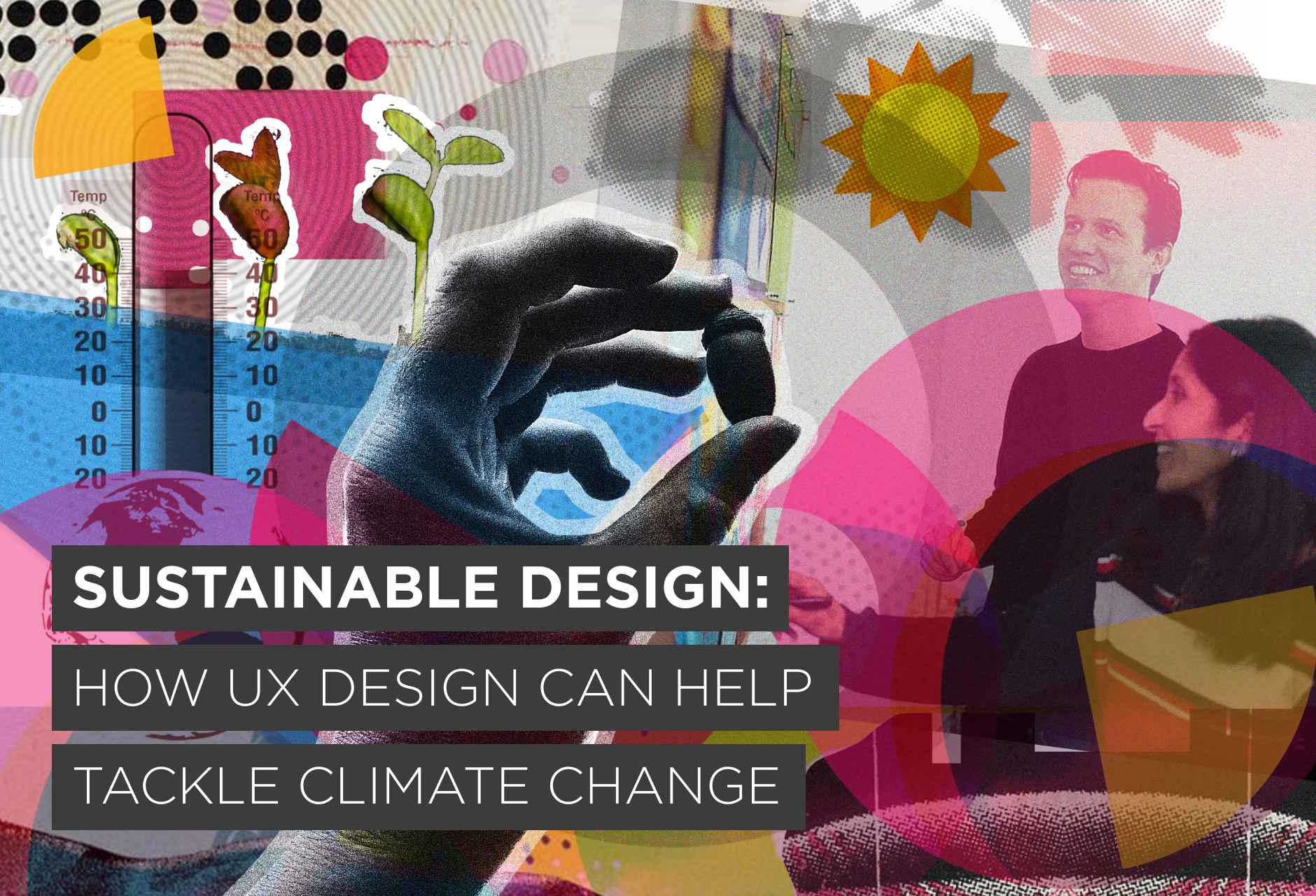In light of the increasingly urgent calls to rapidly reduce carbon emissions, in order to avoid catastrophic global warming, should we as designers have a closer look at how we design to avoid contributing to the problem?
In short, yes. We should all be taking steps into becoming more sustainable where we can. For us, this means websites and the way we design them. But what does sustainable web design involve in practice?
Sustainability is a broad concept, looking at the multiple impacts of what we do on people and planet. But with climate change a priority and recent research estimating that Information computing and technology (ICT) now has a greater share of greenhouse gas emissions than the aviation industry, reducing websites’ carbon footprint is a must. While there are now tools available showing the carbon imprint of running your current website, what steps can be taken to actually improve the environmental impact a website has?

Where do we begin?
It might seem like a daunting task and there are many ways to reduce and minimise the carbon footprint of digital products and services, such as how the website is built and where it is hosted. But a great starting point is looking at how the user is using the website. Following good UX design principles will not only deliver a great user experience, but also help reduce the website’s carbon footprint.
1. Findability.
Going back to the basics, findability is one of the key principles of good UX design. Our aim is for the user find the content they are looking for quickly and easily. When this doesn’t happen, users become frustrated, clicking around the website to find what they are looking for, which results in pages loading and re-loading, maybe even to the wrong downloaded assets. Not ideal. This all takes up resources and data which increase energy usage and therefore the carbon footprint of the web session. By improving findability of content with clear labels and accessible formats, we can reduce this data load and so begin reducing carbon emissions.
2. Focus on what is important to users.
Business and user needs constantly change. As a result, we should aim to show our users the content that is most valued by them first. Taking a good look at your content strategy including content audits are a great way to keep on top of the content that users are interested in and what might be outdated or irrelevant. Simple changes such as keeping on-trend and most relevant content at the forefront of pages and in recommended sections, helps create a content strategy that gives users what they most want to see. It is also good practice to carefully remove content that is no longer useful, relevant, or used. This helps to reduce the amount of data stored in data centres which are hugely energy intensive.
3. Keep users on task.
Another tactic to minimise energy consumption is to keep users focused on the task at hand. How might we do this?
-
Minimise distractions. Research shows the average human attention span is decreasing. Distractions such as pop ups, moving images, and multiple call to actions can cause users to move away from their most important goal and increase energy consumption by having to return to their goal at a later stage.
-
Reduce information overload. Having too many options and too many things to think about slows us down. In terms of website usage, information overload can cause users to become overwhelmed and lose focus on the goal. By providing only what is needed, when it is needed, helps both users and the environment.
- Use intuitive UI patterns. Visual design plays a huge role in keeping users on track. It influences both potential distractions and plays a part in information overload. Principles for good visual design will not only help users, but also the environment. Visual hierarchy eases navigation and helps the user recognise where they are in a website. Consistency in patterns will aid in recognition and will prevent users second guessing themselves which could shorten the time in completing goals. Even increasing button and link sizes can reduce the number of mis-clicks for a user which will cause unnecessary page loads.
4. Minimise data usage.
Data is one of the biggest contributors to the digital carbon footprint. Data storage centres use massive amounts of energy to keep running. A 2015 study showed that around 2% of global greenhouse gas emissions came from data centres alone. This will continue to grow as the digital world expands. What can we as designers and businesses do to mitigate this?
-
Gather only data that is required. Step 1 is to reduce the amount of information we ask from users. Whether it is tracking information for cookie purposes or entering manual information with the likes of form filling, the best way forward is to only gather the essentials. Our key update on GDPR this year will help you to understand how you can optimise your data capturing footprint.
-
Store only what is required. Secondly, storing unnecessary or useless data is also an area where we can look to reduce energy usage. This is usually referred to as ‘dark data’ and takes up valuable energy resources when it is not necessary. Dark data is not only bad for the environment, but it also poses risks to data security and potential failure to meet GDPR and other data legislation. Good data governance and automatic purging of unnecessary data helps to use energy efficiently, improving both business and the planet.
-
Avoid dark patterns. Dark patterns – tricking users into buying or signing up for something they didn’t intend to - have a negative impact on the environment by increasing email traffic or increasing user consumption, for example. Dark patterns are unethical on both a business and environment perspective.
-
Consider image size. Within UX and visual design, data usage can be reduced by reviewing the use of images and their sizing. An image-heavy website will not only take longer to load, but also take more data to store. Take into consideration the file types and use. By using a smaller image file such as a JPEG over a PNG where there is little visual difference in the output will massively decrease data usage. Where it is best to use a PNG, this should be optimized to reduce the file size.

5. Iteration, iteration, iteration
Small changes can make a big difference. By making small changes and monitoring and tracking website performance on these changes, we will be able to see the effects on the carbon output. We can then use this to iterate and improve on multiple sections of the website without using valuable resources and realising the changes have a negative effect.
Is this enough?
As designers, we need to practice sustainability in our own lives so that this carries through to our design thinking and the work we produce. How we live and think influences our design decisions and making active choices every day will flow through to our work.
Website and UX design is not the only area we can look at; there is always more we can do at an organisational level with ISO standards. Sustainable design by itself is not a silver bullet to a carbon free world. Organisations should revisit their own moral compass and ask themselves “Why is it important to be sustainable and environmentally friendly?” This is a complex question of course, with multiple answers.
We need to make sure business models follow the same principles we use in our UX and service design, so that sustainability is valued and put at the forefront of measuring success. Businesses need to set goals and target, particularly for reducing carbon emission but also values and organisational behaviours. Organisations should set environmental principles and targets around their reducing their environmental impact: looking at energy sources, staff transport and working from home (WFH) practices, use of printed material, supplier principles, waste disposal policies and more. That's why we successfully worked towards ISO 14001:2015 Environmental Management System accreditation to make sure sustainable change is happening throughout the whole organisation's operations.
As individuals, we need to start where we are at today. Implementing awareness and changes in our organisations to encourage responsible design thinking is a great start. Not only does this make for well-rounded designers, but also well-rounded businesses. One way to begin is with our free UX audit, so you can identify and implement quick wins.

